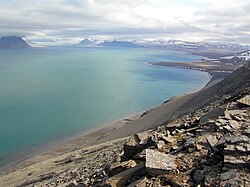Current overseas territories
Integral areas of Norway which are unincorporated:
- Svalbard (including Bear Island), in the Arctic, a part of Norway since 1920.
- Jan Mayen, in the Arctic, a part of Norway since 1929.
Svalbard with Bear Island are subject to the provisions of the Svalbard Treaty. Svalbard and Jan Mayen are sometimes grouped together for some categorization purposes.
Current dependencies of Norway are all in the southern polar region:
- Peter I Island , in the Antarctic and Southern Ocean, possession since 1929.
- Bouvet Island, in the sub-Antarctic and South Atlantic Ocean, possession since 1930.
- Queen Maud Land , in Antarctica, possession since 1939.
Map

Photo gallery
- Jan Mayen with Beerenberg volcano
- Isfjorden, Svalbard
- Vesleskarvet, Queen Maud Land
- Peter I Island
- Bouvet Island






